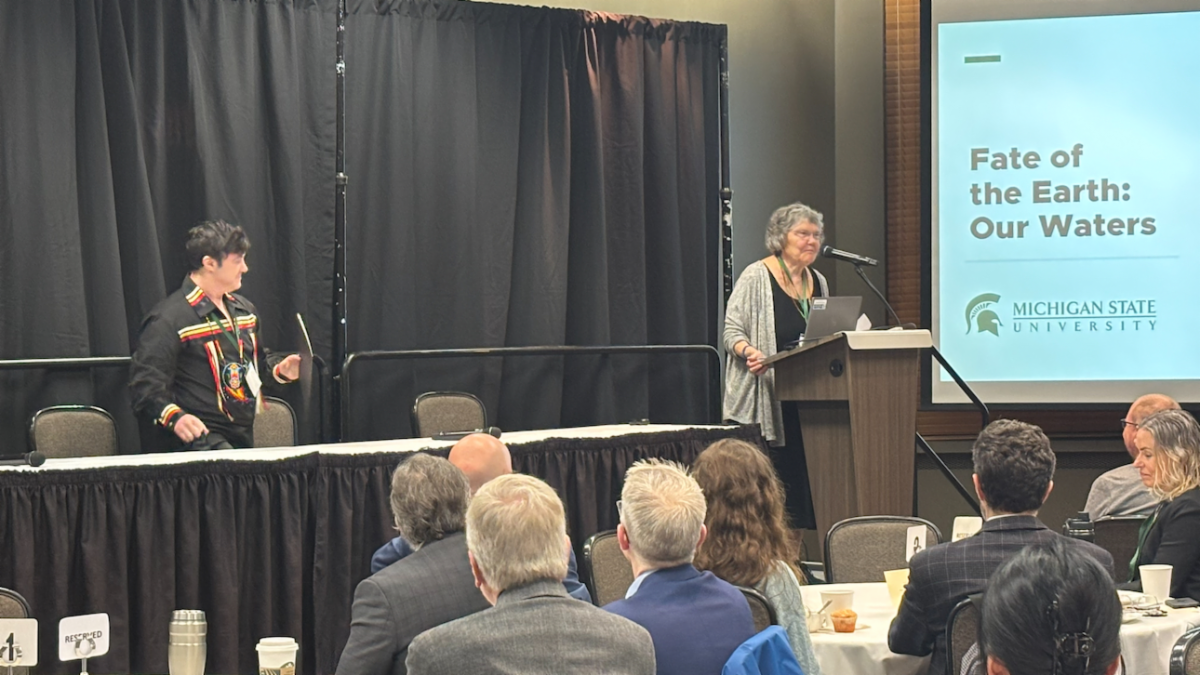Art and Science
VISUAL POETRY | “Yellowstone River––Livingston, Montana” by Ruelaine Stokes (click the image below to play)
Lansing’s Poet Laureate, Ruelaine Stokes presented three poems at the Fate of the Earth Symposium, each with a focus on water. “Yellowstone River––Livingston, Montana” perfectly illustrates the special place this body of water holds in her heart; “Owashtanong” is about the Grand River in Michigan and captures both its force and its history; and “We Are Water” highlights the impressive connection between humans and water.
“Water is all around us; it’s so much a part of our lives,” Stokes said. “The connection between our body, our blood, our arteries, our capillaries, and how much of that is like river systems––rivers and streams. The more you start thinking about water, the more you see that we are connected to water in a very vital, necessary, immediate way.”
Zoë Johnson, another Lansing area poet who read their work “Distance, Social and Temporal; or the 2020s on Indian Time” at the symposium, also emphasized the interconnectedness of all living things, past and present, through the natural world. The river in Johnson’s poem symbolizes continuity, literally holding the imprints of beings who have come before.

Ruelaine Stokes (right) introduces Zoë Johnson (left) at the Fate of the Earth Symposium.
Discussing the relationship between science and art, Johnson stated that while academic disciplines are often segregated, collaboration in both real-life and academic settings require interdisciplinary approaches. They argue that science and art can complement one another, particularly when addressing complex issues like public health and ecology.
“I really do think that the arts are just another language for talking about the same things,” Johnson said. “And they can help us look at things and talk about things from a different perspective that isn’t opposite––it’s complementary.”
Story by Aja Witt of Water Alliance


